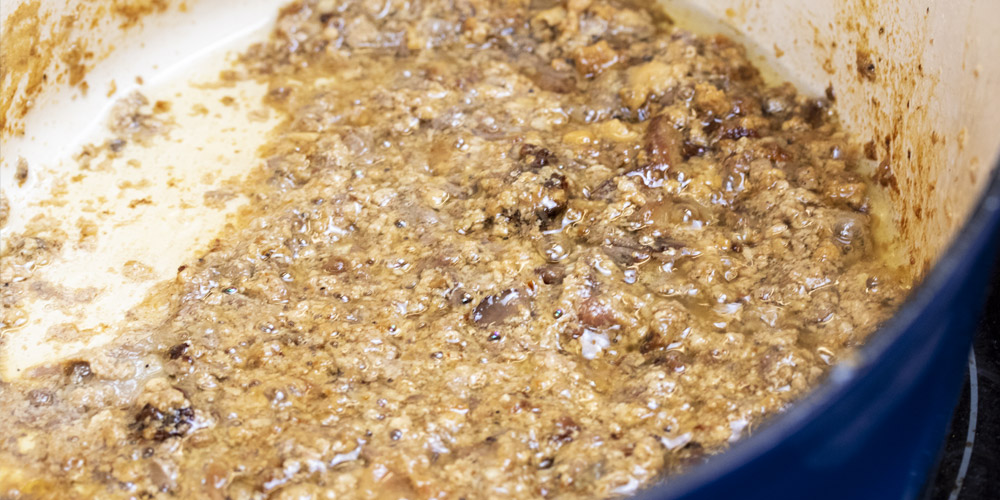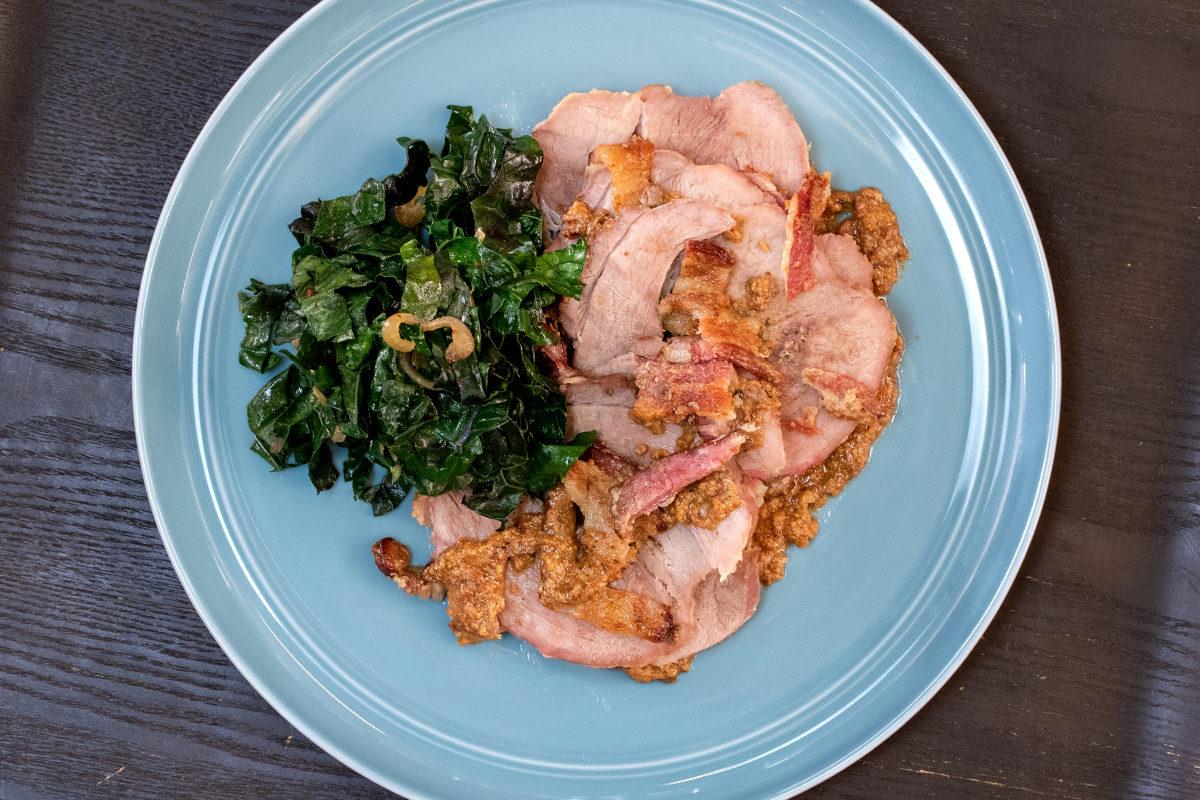Milk Braised Wild Boar
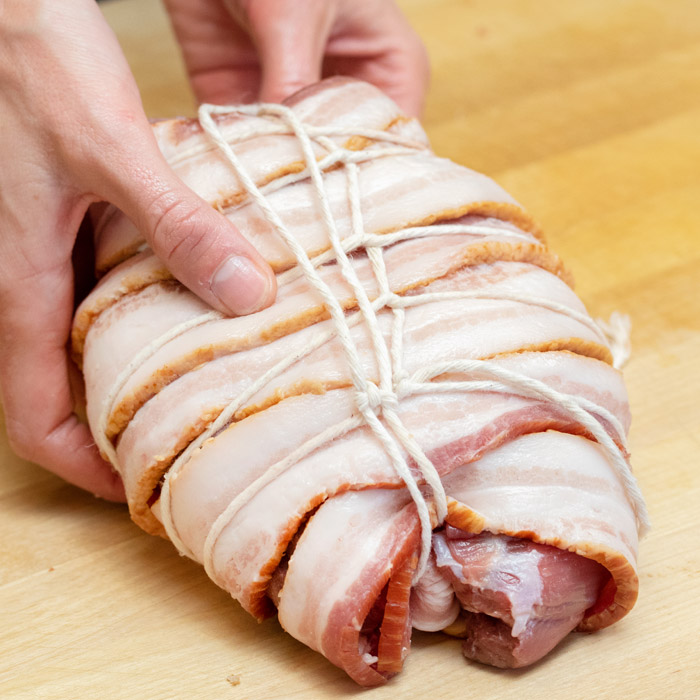
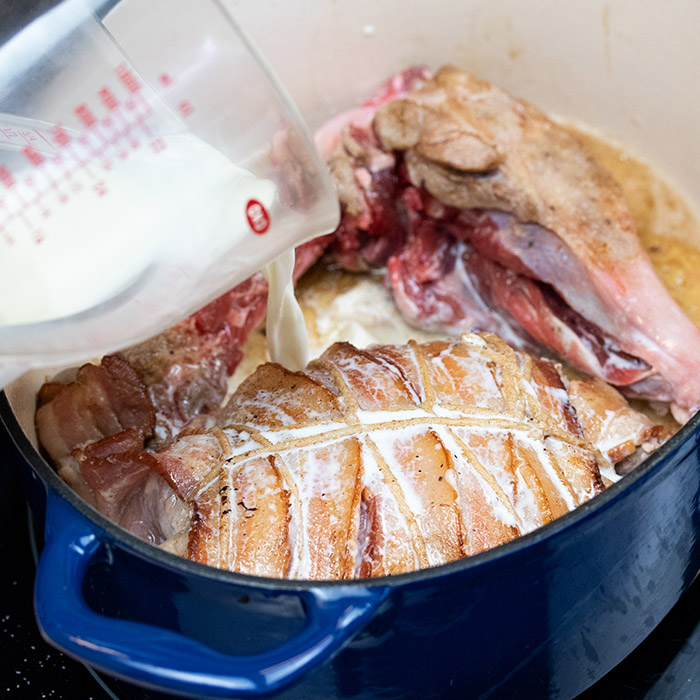
In our Wild Boar Test Kitchen, Jade and Liv tried different cooking techniques for bone-in wild boar legs. Drawing inspiration from a classic Italian recipe, maiale al latte (pork in milk), Liv used part of a de-boned leg. The results were incredibly tasty (so much so that we couldn’t resist scooping and eating some of the sauce straight from the pan!). The meat, unfortunately, was dry. So we refined this recipe to use either boneless shoulders or hindshanks. These cuts have a bit more fat and connective tissue that breaks down during cooking, yielding more tender and moist results.

“I was inspired by our talk about whether you should treat boar like pork or like game. I’ve used this recipe before for pork. I think cubing the leg would be better, so all parts are able to be submerged in the fatty cooking liquid. This recipe was very good, but ultimately not ideal. I think it would have worked better with shoulder or all shanks.”Liv
Servings: 6-8
 |
DRINK PAIRING | |
|---|---|---|
| Pinot Noir | ||
There are lots of variations on this classic recipe: some versions include sage or rosemary, lemon peel or garlic, white wine, a glug of heavy cream or even bacon. We kept our version simple to test the process and let the flavor of the wild boar shine. This recipe requires patience and a close watch — you want the milk to caramelize into a delicious nutty and toasty sauce, but it can quickly end up burnt if you don’t keep an eye on it. The recipe might feel counterintuitive at times, but the results are well worth it! A thick, cozy and comforting sauce that envelopes tender, ever-so-slightly sweet meat.
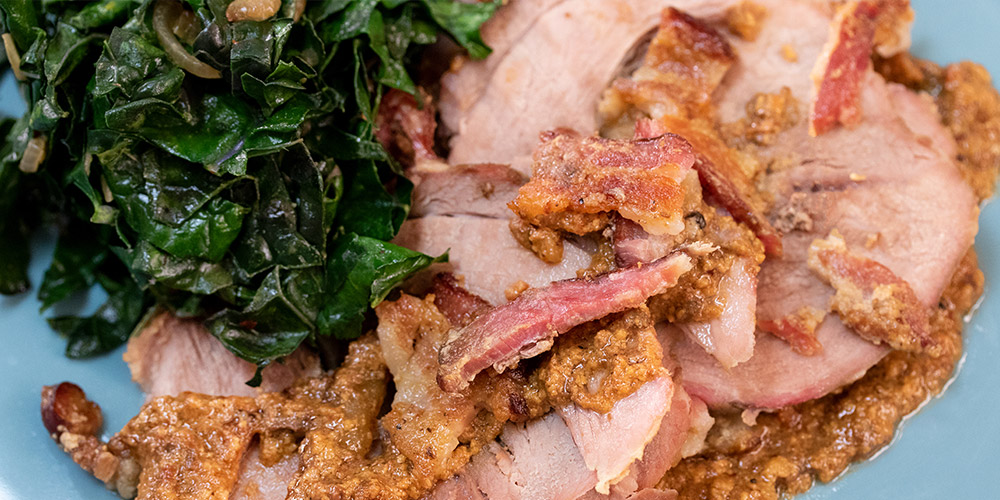
INGREDIENTS
- 2 ½ lb Boneless Wild Boar Shoulder or Hindshanks
- 1 tbsp Butter
- 2 tbsp Vegetable Oil
- Optional: 2oz Bacon or Pancetta, chopped (2-3 slices, depending on thickness)
- 2 ½ cups (or more) Whole Milk
- Salt & Freshly Ground Black Pepper
DIRECTIONS
“It seems counterintuitive. It seems silly to have so much fat in the pan. This is a very old Italian recipe, so who knows if there’s a reason or if this is just how it has always been done, but it will all work out in the end.”
– Liv
